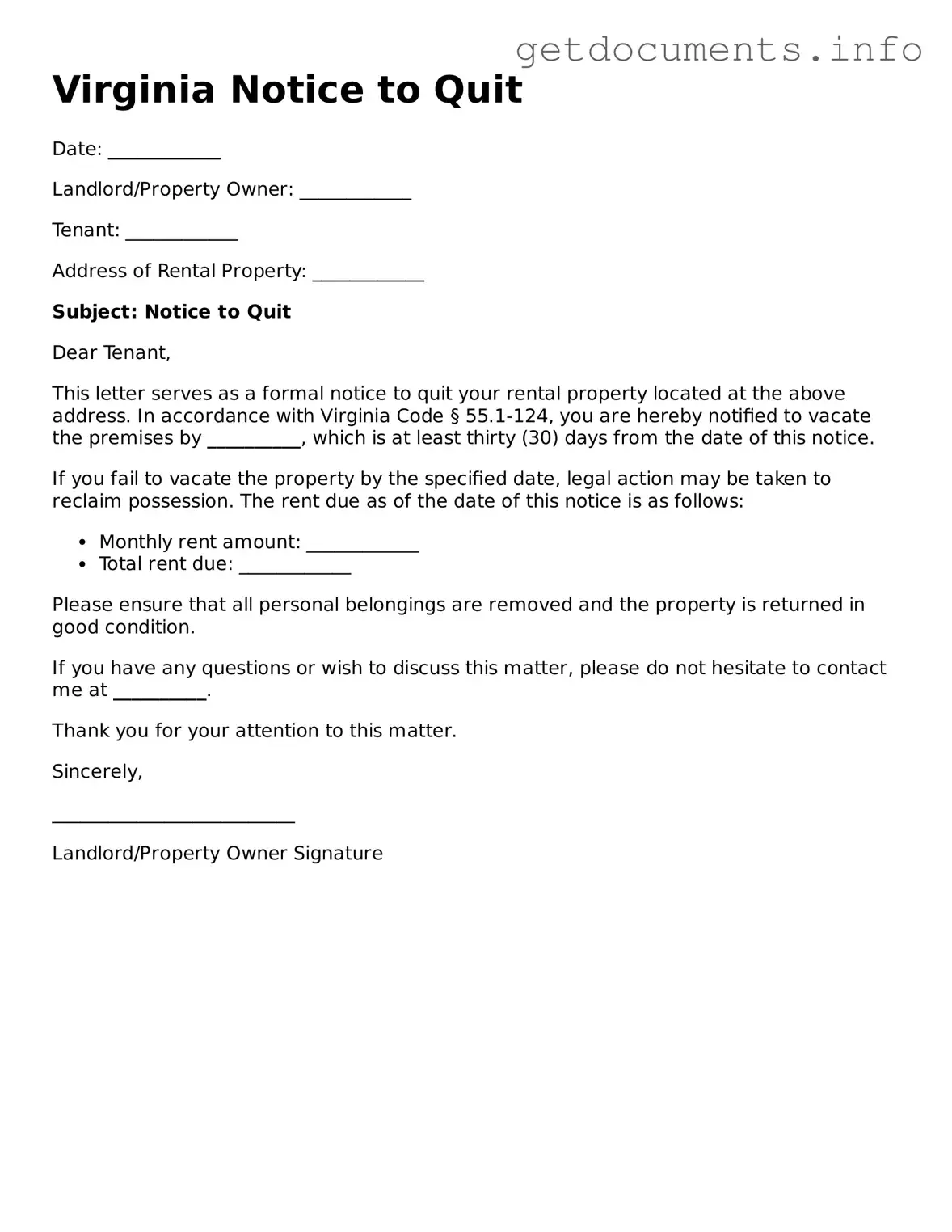The Virginia Notice to Quit form plays a crucial role in the landlord-tenant relationship, serving as a formal notification to tenants regarding the termination of their lease or rental agreement. This document is typically used when a landlord seeks to regain possession of a rental property due to various reasons, such as non-payment of rent, lease violations, or the expiration of a lease term. It outlines the necessary steps tenants must take to vacate the premises and provides a timeline for compliance. Importantly, the Notice to Quit must include specific information, such as the address of the rental property, the reason for the notice, and the deadline for the tenant to vacate. Understanding this form is essential for both landlords and tenants, as it ensures that the eviction process adheres to Virginia’s legal requirements while also protecting the rights of all parties involved. By following the guidelines set forth in the Notice to Quit, landlords can minimize disputes, and tenants can be better informed about their rights and responsibilities in the event of an eviction. Familiarity with this form can lead to smoother transitions and help maintain a respectful landlord-tenant dynamic.
